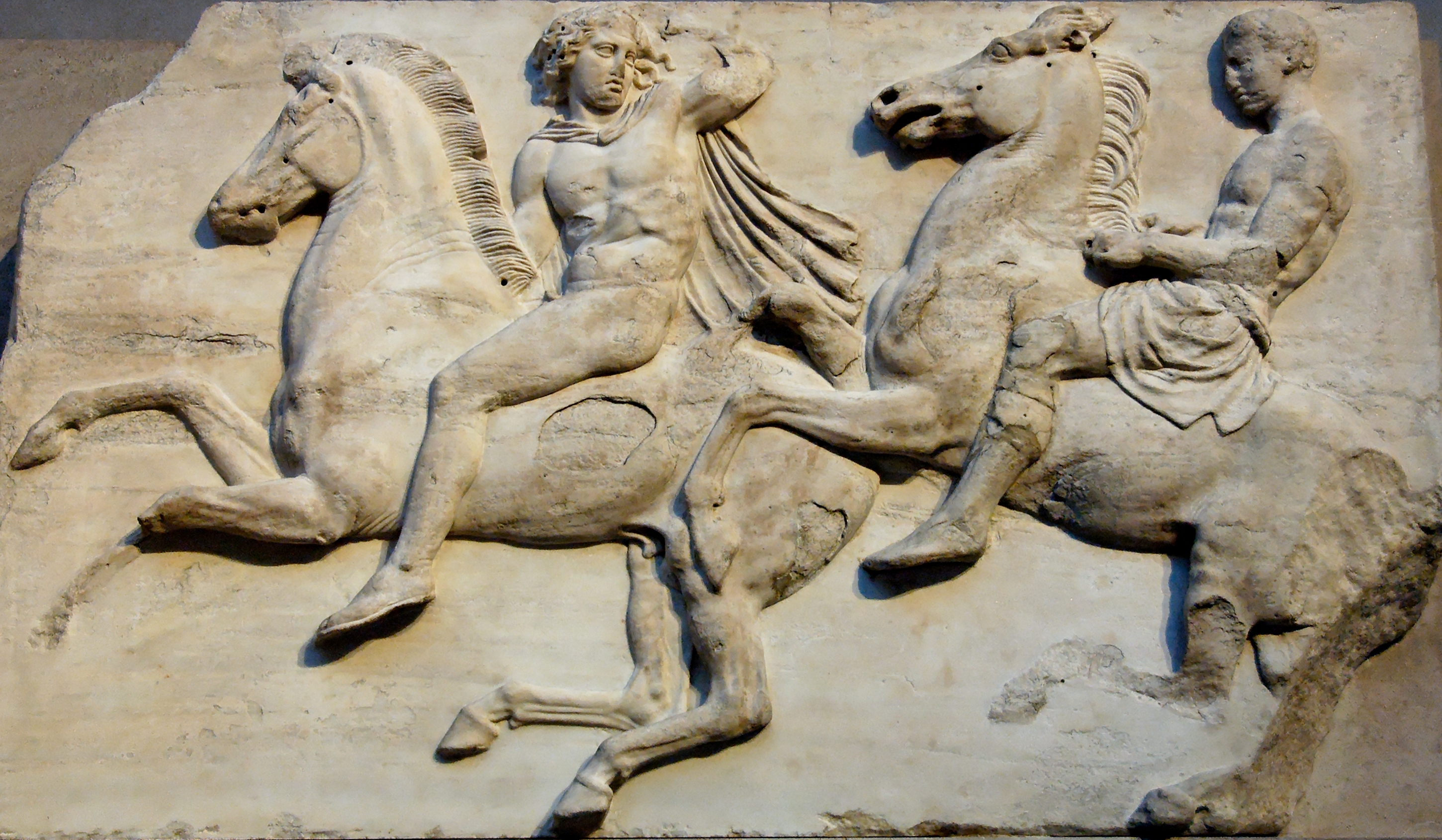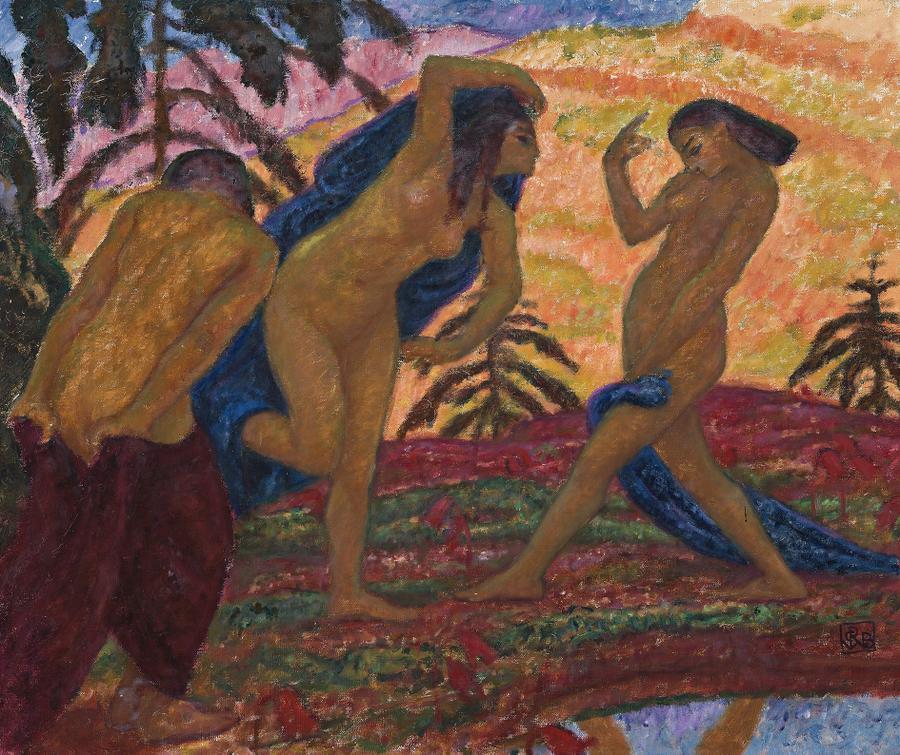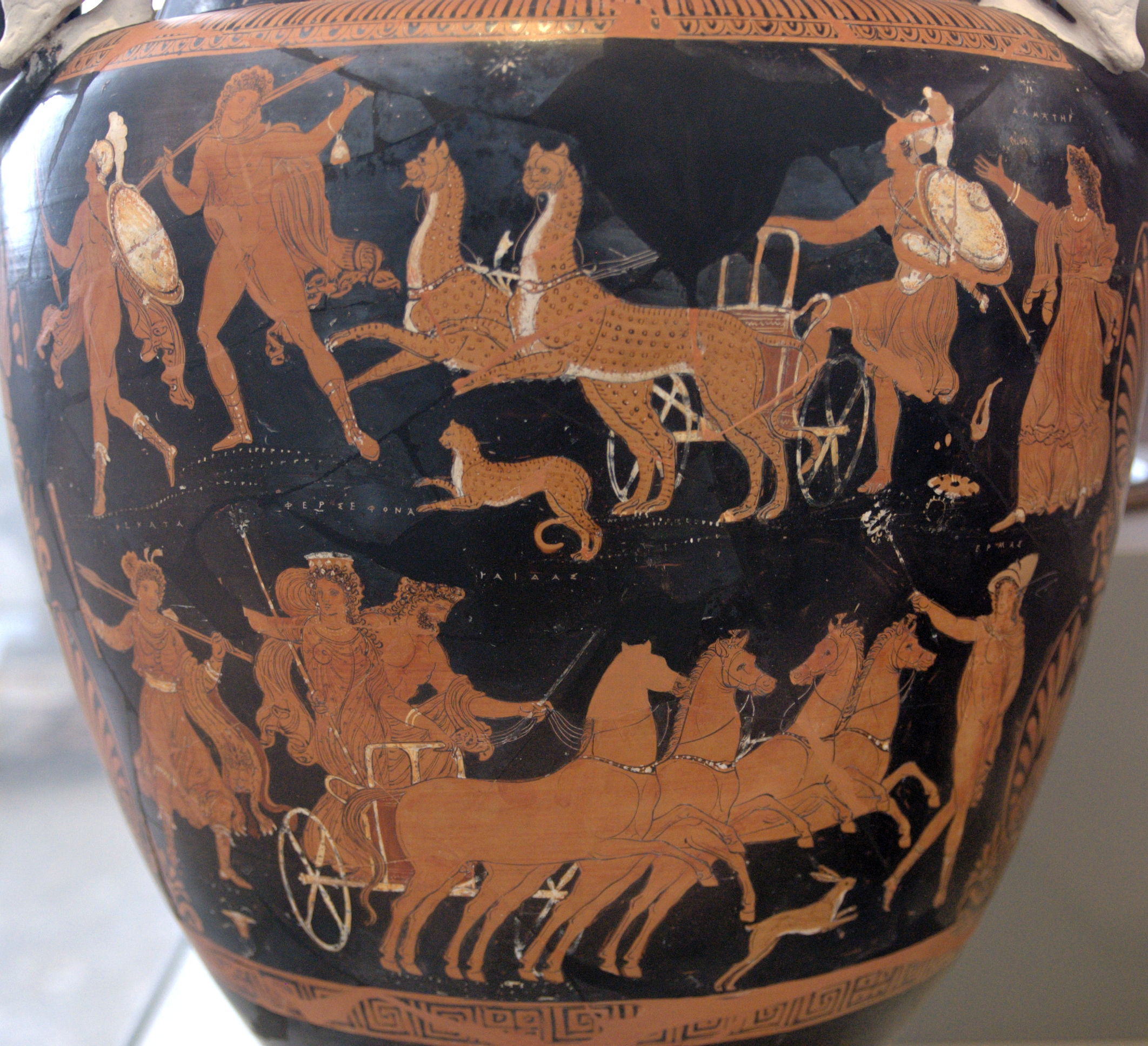 |
Procession
A procession is an organized body of people walking in a formal or ceremonial manner. History Processions have in all peoples and at all times been a natural form of public celebration, as forming an orderly and impressive ceremony. Religious and triumphal processions are abundantly illustrated by ancient monuments, e.g. the religious processions of Egypt, those illustrated by the rock-carvings of Boghaz-Keui, the many representations of processions in Greek art, culminating in the great Panathenaic procession of the Parthenon Frieze, and Roman triumphal reliefs, such as those of the arch of Titus. Greco-Roman practice Processions played a prominent part in the great festivals of Greece, where they were always religious in character. The games were either opened or accompanied by more or less elaborate processions and sacrifices, while processions from the earliest times formed part of the worship of the old nature gods, as those connected with the cult of Dionysus and the P ... [...More Info...] [...Related Items...] OR: [Wikipedia] [Google] [Baidu] |
 |
Roman Triumph
The Roman triumph (') was a civil ceremony and religious rite of ancient Rome, held to publicly celebrate and sanctify the success of a military commander who had led Roman forces to victory in the service of the state or, in some historical traditions, one who had successfully completed a foreign war. On the day of his triumph, the general wore a crown of laurel and an all-purple, gold-embroidered triumphal '' toga picta'' ("painted" toga), regalia that identified him as near-divine or near-kingly. In some accounts, his face was painted red, perhaps in imitation of Rome's highest and most powerful god, Jupiter. The general rode in a four-horse chariot through the streets of Rome in unarmed procession with his army, captives, and the spoils of his war. At Jupiter's temple on the Capitoline Hill, he offered sacrifice and the tokens of his victory to Jupiter. In Republican tradition, only the Senate could grant a triumph. The origins and development of this honour are obscur ... [...More Info...] [...Related Items...] OR: [Wikipedia] [Google] [Baidu] |
 |
Parthenon Frieze
The Parthenon frieze is the low-relief Mount Pentelicus#Pentelic marble, Pentelic marble sculpture created to adorn the upper part of the Parthenon's Cella, naos. It was sculpted between and 437 BC, most likely under the direction of Phidias. Of the 160 meters (524 ft) of the original frieze, 128 meters (420 ft) survives—some 80 percent. The rest is known only from the drawings attributed to French artist Jacques Carrey in 1674, thirteen years before the Parthenon#Destruction, Venetian bombardment that ruined the temple. Along with the 64 Metopes of the Parthenon and 28 figures Pediments of the Parthenon, it forms the bulk of surviving sculpture from the building. All of the frieze has been removed from the Parthenon. 56 blocks of the frieze are at the British Museum in London (forming the major part of the Elgin Marbles); 40 blocks are in the Acropolis Museum in Athens, and the remainder of fragments shared between six other institutions. Casts of the frieze m ... [...More Info...] [...Related Items...] OR: [Wikipedia] [Google] [Baidu] |
 |
Funeral Procession - 15th Century - Project Gutenberg EText 16531
A funeral is a ceremony connected with the Disposal of human corpses, final disposition of a corpse, such as a burial or cremation, with the attendant observances. Funerary customs comprise the complex of beliefs and practices used by a culture to remember and respect the dead, from interment, to various monuments, prayers, and rituals undertaken in their honour. Customs vary between cultures and Religion, religious groups. Funerals have both normative and legal components. Common secular motivations for funerals include mourning the deceased, celebrating their life, and offering support and sympathy to the bereaved; additionally, funerals may have religious aspects that are intended to help the soul of the deceased reach the afterlife, resurrection or reincarnation. The funeral usually includes a ritual through which the corpse receives a final disposition. Depending on culture and religion, these can involve either the destruction of the body (for example, by cremation, sky bur ... [...More Info...] [...Related Items...] OR: [Wikipedia] [Google] [Baidu] |
|
Pompa Circensis
In ancient Rome, the ''pompa circensis'' ("circus parade") was the procession that preceded the official games ''(ludi)'' held in the circus as part of religious festivals and other occasions. Description The most detailed description of the ''pompa circensis'' during the Republican era is given by Dionysius of Halicarnassus, based on eyewitness observation and the historian Fabius Pictor, who says he is describing the original ''Ludi Romani''; Fabius may, however, have been more influenced by what he saw in the ''pompa'' of the Saecular Games in 249 BC. The procession was led by boys of the nobility ''(nobiles)'' riding on horseback, followed by boys on foot who were future infantrymen. Next came the charioteers and athletes who would compete in the games. Troupes of dancers followed to musical accompaniment performed on '' auloi'', a type of woodwind instrument, and the lyre. The dancers were divided into age classes, men, youths, and children. Wearing purple tunics, they wi ... [...More Info...] [...Related Items...] OR: [Wikipedia] [Google] [Baidu] |
|
 |
Great Dionysia
The Dionysia (; Greek: Διονύσια) was a large festival in ancient Athens in honor of the god Dionysus, the central events of which were processions and sacrifices in honor of Dionysus, the theatrical performances of dramatic tragedies and, from 487 BC, comedies. It was the second-most important festival after the Panathenaia. The Dionysia actually consisted of two related festivals, the Rural Dionysia and the City Dionysia, which took place in different parts of the year. Rural Dionysia Origins The Dionysia was originally a rural festival in Eleutherae, Attica ( – ''Dionysia ta kat' agrous''), celebrating the cultivation of vines. Archaeological evidence suggests that theatres for the Rural Dionysia had been constructed as early as the 6th century BCE , but the festival is generally believed to have been celebrated even before that. This "rural Dionysia" was held during the winter, in the month of Poseideon (the month straddling the winter solstice, i.e., ... [...More Info...] [...Related Items...] OR: [Wikipedia] [Google] [Baidu] |
 |
Eleusinia
The Eleusinian Mysteries () were initiations held every year for the cult of Demeter and Persephone based at the Panhellenic Sanctuary of Eleusis in ancient Greece. They are considered the "most famous of the secret religious rites of ancient Greece". Their basis was a Bronze Age agrarian cult, and there is some evidence that they were derived from the religious practices of the Mycenean period.Dietrich (1975) ''The origins of Greek Religion''. Bristol Phoenix Press pp. 166, 167Walter Burkert. (1985)''Greek Religion''. Harvard University Press. p. 285 The Mysteries represented the myth of the abduction of Persephone from her mother Demeter by the king of the underworld Hades, in a cycle with three phases: the ''descent'' (loss), the ''search'', and the ''ascent'', with the main theme being the ''ascent'' () of Persephone and the reunion with her mother. It was a major festival during the Hellenic era, and later spread to Rome. The rites, ceremonies, and beliefs were kept sec ... [...More Info...] [...Related Items...] OR: [Wikipedia] [Google] [Baidu] |
 |
Phallic Processions
Phallic processions are public celebrations featuring a phallus, a representation of an erect penis. Ancient Greece Called ''phallika'' in ancient Greece, these processions were a common feature of Dionysiac celebrations; they advanced to a cult center, and were characterized by obscenities and verbal abuse.Dunkle, Roger '' in ''Introduction to Greek and Roman Comedy'' The display of a fetishized phallus was a common feature. In a famous passage in chapter 4 of the '''', [...More Info...] [...Related Items...] OR: [Wikipedia] [Google] [Baidu] |
 |
Arch Of Titus
The Arch of Titus (; ) is a 1st-century AD honorific arch, located on the Via Sacra, Rome, just to the south-east of the Roman Forum. It was constructed in 81 AD by Emperor Domitian shortly after the death of his older brother Titus to commemorate Titus's official deification or ''consecratio'' and the victory of Titus together with their father, Vespasian, over the Jewish rebellion in Judaea. The arch contains panels depicting the triumphal procession celebrated in 71 AD after the Roman victory culminating in the fall of Jerusalem, and provides one of the few contemporary depictions of artifacts from Herod's Temple. Although the panels are not explicitly stated as illustrating this event, they closely parallel the narrative of the Roman procession described a decade prior in Josephus' '' The Jewish War''. It became a symbol of the Jewish diaspora, and the menorah depicted on the arch served as the model for the menorah used as the emblem of the State of Israel. Th ... [...More Info...] [...Related Items...] OR: [Wikipedia] [Google] [Baidu] |
|
Ambarvalia
Ambarvalia was a Roman agricultural fertility rite, involving animal sacrifices and held on 29 May in honor of Ceres, Bacchus and Dea Dia. However, the exact timing could vary since Ambarvalia was a "fariae conceptivae" - a festival not bound to a fixed date. Summary Ambarvalia is believed to have taken its name from the words "ambiō" - "I go round" and "arvum" - "field". During the festival, they sacrificed a bull, a sow, and a sheep, which were led in procession thrice around the fields. This sacrifice was called a '' suovetaurilia'' in Latin. Ambarvalia can be of two kinds: public and private. The private were solemnized by the masters of families, accompanied by their children and servants, in the villages and farms out of Rome. The public was celebrated within the city's boundaries, in which twelve '' fratres arvales'' walked at the head of a procession of citizens who had lands and vineyards in Rome. During the procession, prayers would be made to the goddess. The ''a ... [...More Info...] [...Related Items...] OR: [Wikipedia] [Google] [Baidu] |
|
 |
Cult Of Dionysus
The cult of Dionysus consisted of devotees who involved themselves in forms of ecstatic worship in reverence of Dionysus. An ecstatic ritual performed by the cult included the '' orgeia,'' a forest rite involving ecstatic dance during the night. The Dionysia and Lenaia festivals in Athens were dedicated to Dionysus, as well as the phallic processions. These processions often featured villagers parading through the streets with large phallic representations. The cult of Dionysus traces back to at least Mycenaean Greece, since his name is found on Mycenean Linear B tablets as ''(di-wo-nu-so)''. However, many view Thrace and Phrygia as the birthplace of Dionysus, and therefore the concepts and rites attributed to his worship. Dionysian worship was especially fervent in Thrace and parts of Greece that were previously inhabited by Thracians, such as Phocis and Boeotia. Initiates worshipped him in the Dionysian Mysteries, which were comparable to and linked with the Orphic Myste ... [...More Info...] [...Related Items...] OR: [Wikipedia] [Google] [Baidu] |
 |
Thesmophoria
The Thesmophoria () was an ancient Greek religious festival, held in honor of the goddess Demeter and her daughter Persephone. It was held annually, mostly around the time that seeds were sown in late autumn – though in some places it was associated with the harvest instead – and celebrated human and agricultural fertility. The festival was one of the most widely celebrated in the Greek world. It was restricted to adult women, and the rites practiced during the festival were kept secret. The most extensive sources on the festival are a comment in a scholion on Lucian, explaining the festival, and Aristophanes' play '' Thesmophoriazusae'', which parodies the festival. Festival The Thesmophoria was one of the most widespread ancient Greek festivals. The fact that it was celebrated across the Greek world suggests that it dates back to before the Greek settlement in Ionia in the eleventh century BCE. The best evidence for the Thesmophoria concern its practice in Athens, but ... [...More Info...] [...Related Items...] OR: [Wikipedia] [Google] [Baidu] |
|
Ludi Romani
The ''Ludi Romani'' ("Roman Games"; see '' ludi'') was a religious festival in ancient Rome held annually, starting in 366 BC, from September 12 to September 14. In the 1st century BC, an extra day was added in honor of the deified Julius Caesar on 4 September and extended to September 19. The festival first introduced drama to Rome based on Greek drama. Origins These games—the chief Roman festival—were held in honor of Jupiter, and are said to have been established by Tarquinius Priscus on the occasion of his conquest of the Latin town of Apiolae. However, Dionysius of Halicarnassus and Cicero date them to the Roman victory over the Latins at Lake Regillus during the early Republic, ca. 496 BC. The games were originally organized by the consuls and later by the curule aediles. At first they lasted only a day. A second day was added on the expulsion of the kings in 509 BC, and a third after the first secession of the plebs in 494 BC. From 191 to 171 BC they lasted ... [...More Info...] [...Related Items...] OR: [Wikipedia] [Google] [Baidu] |